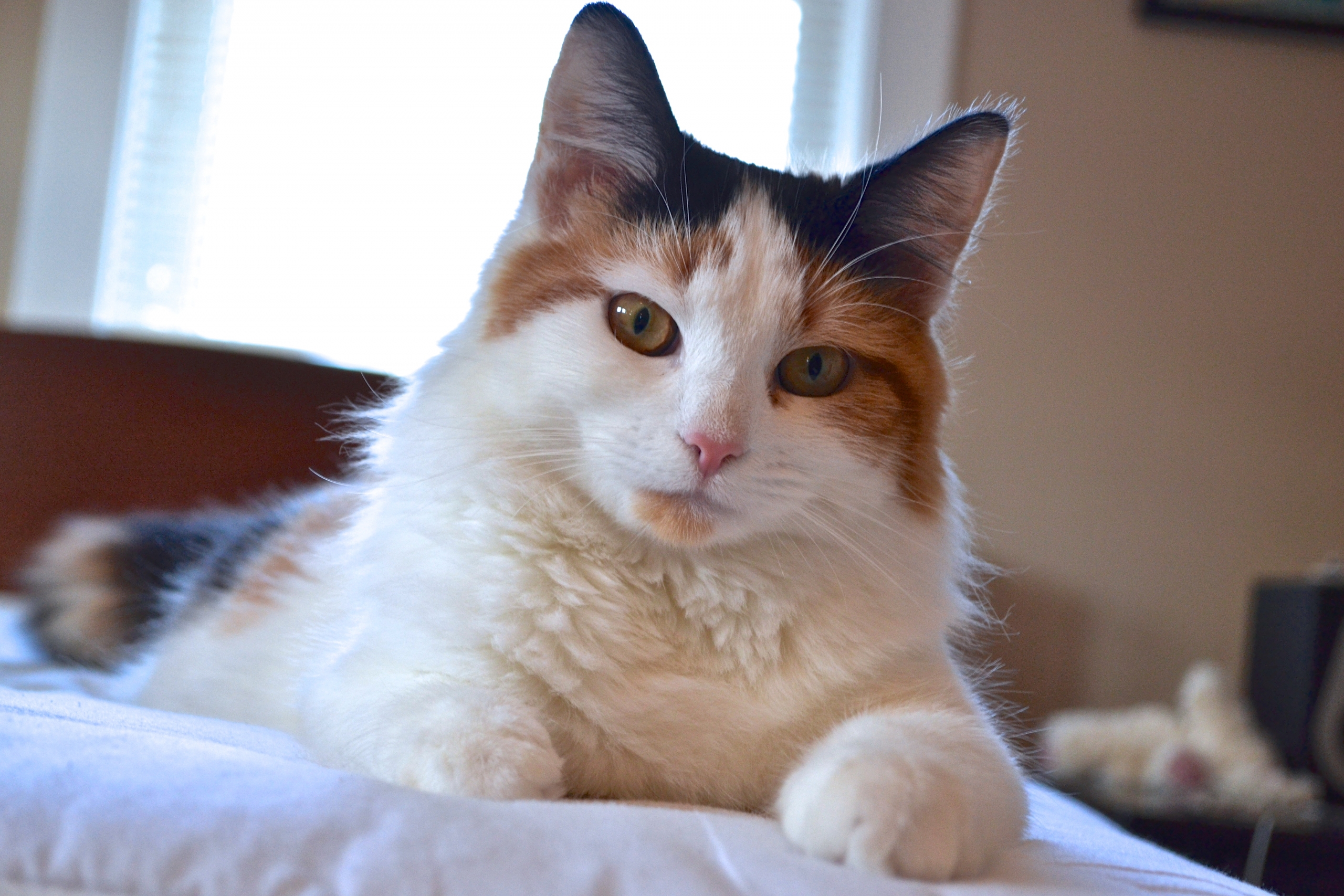Why Does My Cat Puke?
Dear NPP,
My cat throws up multiple times a week. It’s gross and I’m tired of cleaning up after her. Why is she puking and what can I do to prevent this?
Sincerely,
Kitty Cleaner Upper
Dear Kitty Cleaner Upper,
Vomiting is one of the most commonly reported clinical signs noted in feline veterinary exams. While many cat owners fancy their cats as just having “sensitive stomachs” or simply “eating too fast”, chronic vomiting is not by any means healthy or ‘normal’. In fact, chronic or intermittent vomiting could be from a wide range of reasons from benign to a precursory symptom of larger problems such as Irritable Bowel Disease (IBD) and even some types of cancer. As always, if your cat is having distress, or experiences these issues often it is best to seek the advice and treatment of your pet’s veterinarian.
Common reasons for vomiting:
1. Hairballs
Hairballs will appear clear or foamy (like saliva) with at least some fur in them. Hairballs can be dense and have a clump-like shape (sometimes resembling feces), or they can just be a few loose pieces of hair.
Common Causes of Hairballs
Although hairballs are common, they are not technically a form of vomiting. Hairballs can be caused by various factors, including diet, grooming, stress, poor digestion, and more. An occasional hairball is nothing to stress about, however, frequent hairballs can be a good indicator of underlying issues, so it’s important to address them. We will cover more of this topic in an upcoming blog.
2. Regurgitation
Regurgitation is the most common form of vomiting and occurs when your cat throws up shortly after eating. Because this is not enough time for the stomach acid to digest the food, regurgitation will look like the food itself, usually still whole or slightly softened. There are multiple reasons for regurgitation:
Common Reasons for Regurgitation:
Type of Food
- Dry food (kibble) diets are notorious for causing regurgitation because they consist primarily of starchy carbohydrates that expand with moisture (think cereal soaked in milk). This causes multiple problems:
- Since felines are carnivorous, their teeth are designed to rip and tear raw muscle and organs. Cats lack any teeth that grind plant material (or in this case, kibble). Therefore, kibble often gets swallowed mostly whole. It’s not ideal for large pieces of kibble to linger in a cat’s stomach.
- Once dry kibble is consumed, it expands as it absorbs the moisture in the stomach. A feline’s stomach cannot stretch and expand as much as a canine’s, and therefore cannot accommodate large meals. Therefore, the stomach signals the brain that something undigestible has been consumed, and the body works to expel the food.
Since a feline’s signal to stop eating is triggered by consumption of animal fat and protein (something most dry foods are deficient in), cats will often continue to eat even after the stomach is full, resulting in regurgitation. Therefore, it’s important to feed your cat a diet that is rich in quality animal protein, high in moisture, and low in carbohydrates.
Meal Size and Frequency
- If your cat eats too fast, regardless of the food type, regurgitation can result. However, this problem typically happens when there is too much time between meals. Cats thrive on a diet that consists of several small meals throughout the day: ideally 3-4. Feeding larger meals only once or twice a day can drive a kitty to wolf down their meal faster than their digestive system can handle. This issue can also cause “hunger pukes” which are just digestive juices and are commonly clear, yellow or light brown.
- Meals that are too large will cause food to back up into the esophagus and also lead to regurgitation. This is related to meals that aren’t frequent enough, as mentioned above.
- Free-feeding (allowing the cat to graze throughout the day) can also cause regurgitation. If cats have constant access to food, their digestive system never reaches a state that would trigger hunger, which keeps the whole metabolic system running smoothly. This is a particularly serious problem for a cat who is kibble-fed, as dry food contains about 10% moisture – putting kitty at high risk for diseases linked to chronic dehydration, including kidney disease.
- Free-feeding has also been known to disrupt a cat’s natural digestive rhythm during which stomach acid increases to break down food. If food becomes available constantly, the stomach pH can change, leading to urine pH changes – a major factor in the formation of urinary crystals.
3. Bilious Vomiting
Bilious vomiting or “hunger puking” occurs long after the cat has eaten or just before a meal, and will appear to be yellow, clear, or light brown and often foamy.
Causes of Bilious Vomiting:
- The most common cause of this type of vomiting is too much time between meals (not feeding frequently enough). As the cat grows hungry, the stomach acid builds in anticipation of a meal. If the cat doesn’t have food available to consume and digest, the overproduction of that stomach acid will result in vomiting yellow foamy bile.
- As mentioned above, it’s important to make sure an adult cat gets fed at least 3 times a day, even if these meals are just a couple hours apart. If feeding fresh 3 times/day isn’t possible, freeze-dried meals make excellent snacks between meals as they are low in carbohydrates and high in animal fat and protein.
*This article is for informational purposes only. It is not meant to provide medical advice or replace the advice of a qualified veterinarian.
References:
- Deng, E. Iwazaki, S. A. Suchy, M. R. Pallotto, K. S. Swanson. Effects of feeding frequency and dietary water content on voluntary physical activity in healthy adult cats. Journal of Animal Science, 2014 https://pubmed.ncbi.nlm.nih.gov/24492545/
- Guillermo Díaz. MV. What Dry Food Does to Your Cat’s Guthttps://feline-nutrition.org/answers/answers-what-dry-food-does-to-your-cats-gut






